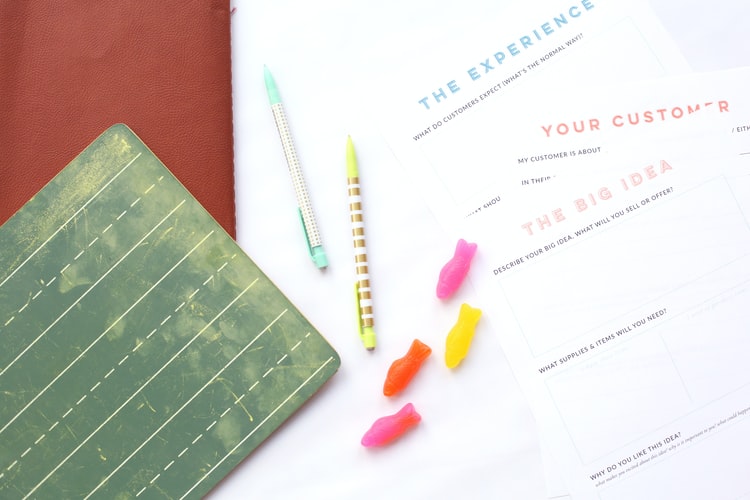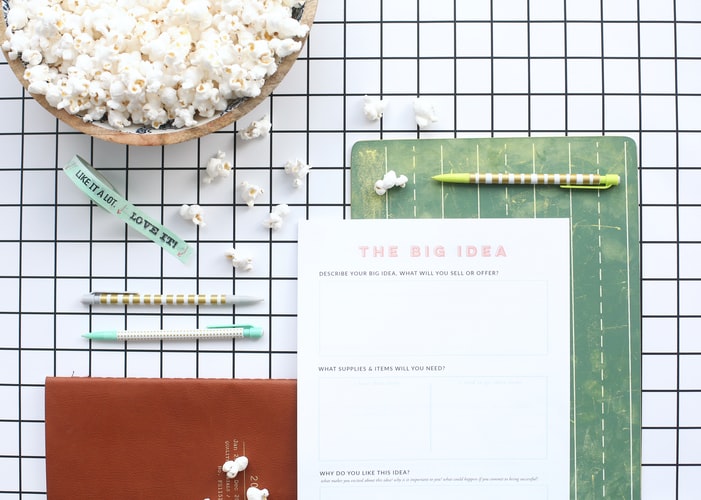Anxiety Workbook for Teens—The Best Resources To Help You Beat Your Anxiety
Anxiety in high school students is a prevalent issue today. Data shows that the number of children and adolescents who suffer from an anxiety disorder is on the constant rise. The reasons why student anxiety is increasing are numerous. The constant pressure to do better at school while chasing opportunities beyond it is one factor.
Social anxiety in teens is also common in this day and age. It is the constant worry about being criticized by others and avoiding socializing in person for fear of being judged. Other forms of anxiety disorders the young suffer from are panic disorder, performance anxiety, and generalized anxiety disorder.
Anxiety workbooks are one way professionals in the field help teens with anxiety. You can use them as a resource for battling this issue, whether you experience only occasional anxiety or suffer from a mental health condition. These workbooks are packed with information, practical tips, and additional resources you can use if you want to inform yourself and address your anxiety with professional help.
Let’s take a closer look at what you can find in anxiety workbooks for teens and which ones are the best out there.
What Are Anxiety Workbooks for Teens?


Credit: freestocks
Anxiety workbooks for teens are resources that help you deal with your anxiety, whether it is an occasional problem or a mental health disorder. These workbooks are written by experts in the field, so they are regarded as practical and efficient tools for dealing with this issue. If you are being treated for your anxiety, your doctor can also give you workbooks to aid your recovery.
There are two main types of anxiety workbooks for teens, based on the target audience. The first type is anxiety workbooks for teens who struggle with anxiety. The second type is for therapists who treat children, teens, and adults for anxiety disorders. They consist of the activities the experts can use to help their patients.
Let’s take a closer look at:
- The content of anxiety workbooks for teens
- Their purpose
What Do Anxiety Workbooks Include?
Anxiety workbooks usually contain sections dedicated to:
- The explanation of anxiety as a mental health disorder
- Real-life examples of people who suffer from anxiety disorders
- Techniques for preventing clinical anxiety
- The detailed representation of anxiety-related behaviors that help you get insight into how the disorder manifests
- Mental exercises you can do to break the negative thinking patterns
- Practical tips on how to deal with anxiety attacks
- The additional resources you need if you want to be treated for your anxiety
How Do Anxiety Workbooks Help You?
Mental exercises found in anxiety workbooks include relaxation, meditation, deep breathing, and mindfulness practices. The workbooks have clear-cut guidelines on how to perform each of these practices to get the best results. Along with the practical tips for coping with anxiety, mental exercises make up the majority of anxiety workbook content. They aim to help you:
- Recognize the thoughts and emotions that trigger anxiety
- Soothe the feelings of fear and stress that paralyze you to do anything
- Equip yourself with the practical tools to deal with anxiety attacks when they occur
- Find the roots of your anxiety deep in your subconscious
- Gain control over your negative thinking patterns
While anxiety workbooks can be an excellent tool you can use to battle your anxiety, they cannot be a substitute for treatment. If you decide to buy an anxiety workbook and apply the methods you find in it consistently, you can learn to cope with and overcome your anxiety over time. If that doesn’t happen, you should consider going to a doctor.
Reviewing the Anxiety Workbooks for Teens


Credit: The CEO Kid
If you want to invest in a good anxiety workbook, you may stumble upon one problem—not knowing which one is the best. Even if you have someone who has read some of these books and can recommend them to you, you can’t be sure whether what worked for them will work for you. Different anxiety workbooks have different approaches to dealing with the issue.
Everyone’s experience with anxiety is different, which is why you can’t know which book is the perfect one for you, but you can rely on reviews. This will help you get an insight into what the book is like, whether you like the methods it suggests, and decide if you will end up buying it.
The five anxiety workbooks we will examine here are:
- “Anxiety & Phobia Workbook” by Edmund J. Bourne
- “The Anxiety Workbook for Teens” by Lisa M. Schab
- “Managing Anxiety Workbook for Teens” by Ester R. A. Leutenberg and John J. Liptak
- “The Anxiety Toolkit” by Alice Boyes
- “Help for Anxious People: Literacy and Life Skills” by Angela Ramsay
“Anxiety & Phobia Workbook” by Edmund J. Bourne
Written by an expert in the field of anxiety, phobia, and other mental health disorders, “Anxiety & Phobia Workbook” has found standing with millions of people and has been translated into numerous languages. It’s used both by doctors and people struggling with anxiety.
In his book, Edmund J. Burne puts mindfulness practices into focus, and he outlines practices that help you:
- Root out false beliefs
- Relax in difficult situations
- Develop healthy lifestyle habits
- Accept your anxiety rather than suppress it
The last point has to do with Acceptance and Commitment Therapy (ACT), the aim of which is to help you make peace with your negative thoughts. The ACT approach is useful in beating anxiety because it teaches you not to feel guilty about being stressed, worried, or paralyzed by your anxiety. This is a huge step to take towards healing.
Here’s an overview of Burne’s workbook:
| “Anxiety & Phobia Workbook” | Information |
| Latest Edition | May 1, 2020 |
| Pages | 528 |
|
Price |
$23.95 |
|
Available in the e-book format |
Yes |
|
Methods supported |
|
“The Anxiety Workbook for Teens” by Lisa M. Schab
Lisa Schab is a clinical social worker who writes books on improving self-esteem, overcoming depression, and dealing with eating disorders and generalized anxiety disorder.
“The Anxiety Workbook for Teens” focuses on simple activities you can employ in your everyday life to battle your anxiety, making it perfect for adolescents. The exercises teach you to “catch” your negative thoughts, prevent your anxiety from controlling you, and build higher self-esteem over time.
In her book, Schab relies on Cognitive Behavioral Therapy (CBT) to help you battle your anxiety. CBT is a therapy that includes regular sessions with a mental health counselor, which is why Schab’s workbook works best if you apply it alongside talk therapy.
You can also find additional resources for overcoming anxiety issues in Schab’s workbook. Here’s more information if you’re intrigued by it:
| “The Anxiety Workbook for Teens” | Information |
| Published | April 1, 2008 |
| Age Range | 13–17 years |
| Pages | 191 |
| Price | $17.95 |
| Available in the e-book format | Yes |
| Methods supported | Cognitive Behavioral Therapy (CBT) |
“Managing Anxiety Workbook for Teens” by Ester R. A. Leutenberg and John J. Liptak
“Managing Anxiety Workbook for Teens” is a workbook that is primarily aimed at experts to help them work with people with anxiety issues. The full name of the workbook is “Managing Anxiety Workbook for Teens—A Toolbox of Reproducible Assessments and Activities for Facilitators.” You can take a glimpse inside the book in PDF format.
Although it is written for experts, Leutenberg and Liptak’s workbook contains information that can give you a detailed explanation of anxiety as a mental health disorder.
The workbook presents the Awareness Module that helps counselors select the activities in their practice that focus on each aspect of anxiety disorders individually. The module consists of five parts:
- Signs of Stress Symptoms—recognizing anxiety
- Need for Control—determining whether the need for control rises to a dangerous level
- Social Approval—exploring how the need to be approved by other people affects anxiety
- Perfectionism—answering how the need to achieve constantly hinders the progress of overcoming anxiety
- Erasing the Stigma of Mental Health Issues—focusing on how suffering from clinical anxiety carries a social stigma and how dealing with that stigma can worsen anxiety
Here’s more about Leutenberg and Liptak’s workbook:
| “Managing Anxiety Workbook for Teens” | Information |
| Published | July 1, 2016 |
| Age Range | 12–18 years |
| Pages | 132 |
| Price | $49.95 |
| Available in the e-book format | No |
| Methods used | The Awareness Module |
“The Anxiety Toolkit” by Alice Boyes
“The Anxiety Toolkit: Strategies for Fine-Tuning Your Mind and Moving Past Your Stuck Points” is a workbook that’s designed to help you, whether you have occasional anxiety or have been diagnosed with clinical anxiety.
Boyes is a psychology Ph.D. who also writes for Psychology Today. Her workbook is an excellent choice if you find yourself particularly paralyzed by the fear of failure.
The fear of failure is a sure symptom of test anxiety, but it can also be manifested if you suffer from generalized anxiety. When the mere thought of doing a test or completing an activity terrifies you to the point where you will self-sabotage by not preparing and not going through with it, you have test anxiety.
Take a look at the specific information about Boyes’ workbook:
| “The Anxiety Toolkit” | Information |
|
Published |
March 3, 2015 |
|
Pages |
240 |
|
Price |
$49.95 |
|
Available in the e-book format |
Yes |
|
Focuses on |
|
“Help for Anxious People: Literacy and Life Skills” by Angela Ramsay
Available for free in the PDF format, “Help for Anxious People” is an excellent tool to use to:
- Get a deeper understanding of anxiety and how it works
- Determine whether you need professional help with your anxiety
- Learn how to seek that help
- Apply exercises that help you live with your anxiety daily
Ramsay employs the “Assess-Plan-Act” technique in her exercise suggestions. The technique means you:
- Assess the problem that needs fixing—your anxiety
- Plan how you will fix the problem—you come up with a clear plan on the activities you will do and how often you’ll do them
- Act on your plan—you employ the exercises to overcome your anxiety overtime
Let’s see what else we know about Ramsey’s workbook:
| “Anxiety & Phobia Workbook” | Information |
| Published | 2003 |
| Pages | 65 |
| Price | Free |
| Available in the e-book format | Yes |
| Methods found | Assess-Plan-Act |
What Are Anxiety Worksheets for Teens?


Credit: The CEO Kid
Worksheets are a major part of anxiety workbooks for teens. A worksheet is a list of activities you can do or the guidelines on how to do them. It can also be a list:
- Explaining an issue in short, easy-to-understand points
- Containing the specific questions you have to answer
- Recording your progress
If you don’t have time for extensive workbooks, you can use worksheets instead. There are many resources where you can find free worksheets online.
Let’s take a look at some examples:
- Worry Exploration Questions worksheet—Courtesy of the Therapist Aid website, this worksheet asks you to answer specific questions about your worry, which is an emotion that is no stranger to an anxious person. Anxiety makes you fret about unlikely scenarios and imagine negative, often catastrophic, outcomes for the future. The worksheet helps you be more at peace knowing your worries aren’t based on reality
- Breathing Rate Record worksheet—Found on the Center for Clinical Interventions website, this breathing worksheet is super helpful if you experience regular panic attacks. You can use the worksheet in PDF format or download and print it in as many copies as you need. It contains the specific breathing exercises you can do and the instructions on how to monitor your breathing rate
- Thought Record worksheet—The worksheet from the Psychology Tools website is an example of worksheets made for mental health professionals. You can use it on your own as well if you want to incorporate the practice of conscious thought-monitoring activity into your daily life
Anxiety Activities for Teenagers
Anxiety workbooks for teens are filled with activities you can use to deal with your anxiety efficiently and live a healthy life despite it.
To help you determine whether you want to invest in an anxiety workbook, you can try out some of these exercises:
- Identifying your safety behaviors
- Exploring the situations that make you anxious
- Incorporating physical exercise into your weekly routine
What Is Your Safety Behavior?
When you suffer from severe anxiety, your instincts will tell you to avoid the situations that can trigger it. For example, if you have performance anxiety, you will do everything you can to get out of doing presentations. If you succeed, not speaking in front of a crowd of people will relieve your anxiety temporarily. Not facing your fear this way hinders your healing process.
There are many types of safety behaviors you can use to cope with your anxiety when it manifests, like:
- Looking at your phone to avoid talking with people in social situations
- Talking rapidly or too much because you fear the “awkward” silence
- Over-preparing for future events
- Checking yourself in the mirror constantly
You can find safety behavior worksheets to look more deeply into what kind of safety behaviors exist and determine whether you can relate to them.
When Do You Feel Anxious?
Use this Exposure Hierarchy worksheet to identify the situations that make you anxious. You should also determine how much the specific situations cause your anxiety to act up. This activity will help you:
- Find the cause of your anxiety
- Determine the type of anxiety disorder you may have
- Be prepared for the next time you find yourself in the anxiety-triggering situations
- Make peace with your stressors
Can You Workout Regularly?
Regular physical exercise helps you eat and sleep better, boosts your self-esteem, and makes you less anxious about everyday situations. If you find it difficult to work out consistently, you need a plan:
- Pinpoint the type of exercise that is the least unpleasant for you
- Determine what time of the day is best to start doing that exercise and do it at that time always
- Start with small steps and select three days a week for your exercise
- Set the alarm on your phone that reminds you to exercise
- Give yourself a treat when you complete an exercise (your reward can be anything, like a chocolate muffin or an edition of the magazine you like to read)
Have You Tried Anxiety Activities for Teens?
In the battle against teen anxiety, the best you can do is share your experience with others. If you’ve done any anxiety activities yourself, we want to hear all about them. Tell us what they are, how you came across them, and whether they helped you.
More so, we want to hear about your individual struggle with anxiety, whether it’s occasional anxiety or a mental health condition. Let’s normalize the issue by talking about it and help our community together.
Write about your experience with anxiety, and we’ll share your story with our readers!

